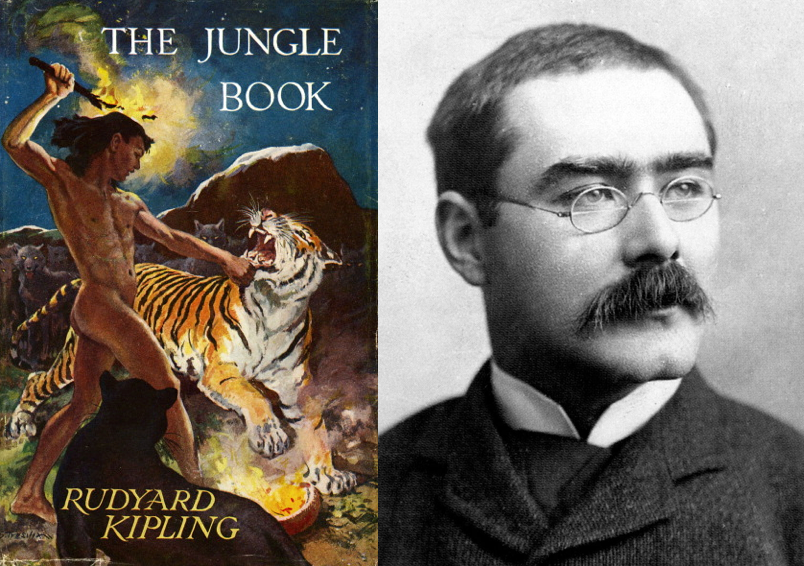Rudyard Kipling, the famed British author of The Jungle Book (1894) and first English-language winner of the Nobel Prize in Literature (1907), visited Singapore in 1889.
A historically controversial author with racist views that championed Western domination of the world (e.g. White Man’s Burden), a 23-year-old Kipling was on a round-the-world voyage by sea from India to London to become, in his own words, a “Globe-trotter”.
His travels took place before most of his major works, including The Jungle Book (1894), Kim (1901) and White Man's Burden (1899), were penned. Thus, it is likely that this trip played a critical role in shaping his world view and his works.
His observations of the India to Japan leg of his trip were recorded in his book, From Sea To Sea And Other Sketches, Letters of Travel and his poem The Song of the Cities.
In late March 1889, Kipling arrived in Singapore from Penang by steamship.
Singapore in 1889 was a territory under the British-controlled Straits Settlements. The colonial governor of the day was the popular Sir Cecil Clementi Smith, whose name lives on in Clementi Town, Clementi Road, and Cecil Street.
70 years after Raffles’ founding, Singapore had grown into one of the world’s major ports.
[caption id="" align="aligncenter" width="768"]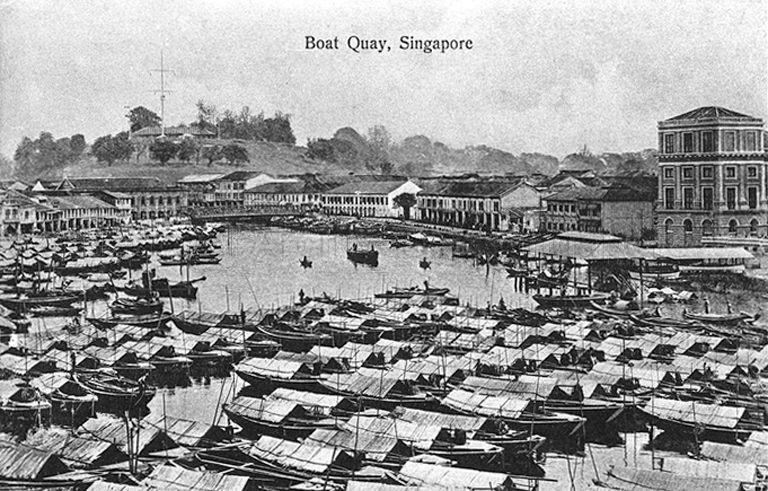 View of Boat Quay in the late 1800s. Source: NAS[/caption]
View of Boat Quay in the late 1800s. Source: NAS[/caption]
In The Song of the Cities, Kipling noted Singapore’s good geographical location in bridging the East and West, and proclaimed it as the second most important port in the world:
Hail, Mother! East and West must seek my aid
Ere the spent hull may dare the ports afar.
The second doorway of the wide world’s trade
Is mine to loose or bar.
Approaching Singapore on his steamship, Kipling would have caught a glimpse of a three-year-old New Harbour (present day Keppel Harbour).
[caption id="" align="aligncenter" width="712"]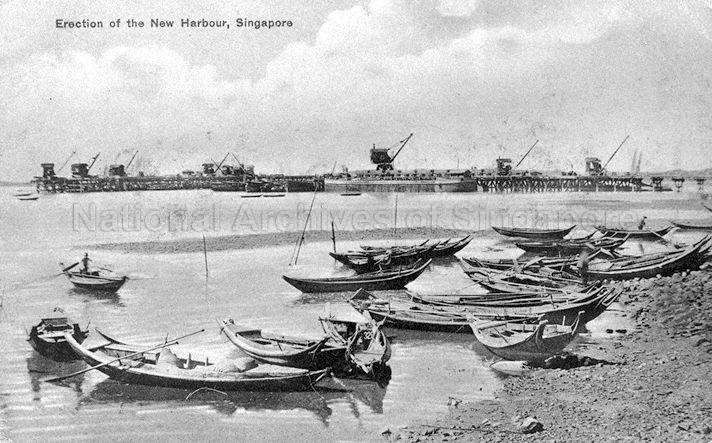 Construction of New Harbour (Keppel Harbour) in the early half of the 1800s. Source: NAS[/caption]
Construction of New Harbour (Keppel Harbour) in the early half of the 1800s. Source: NAS[/caption]
As his ship neared Singapore's main harbour, he would've seen a 25-year-old Collyer Quay with a 10-year-old Exchange Building (former building on the site of present day Fullerton Building) sitting on the right of the coastline.
[caption id="" align="aligncenter" width="709"]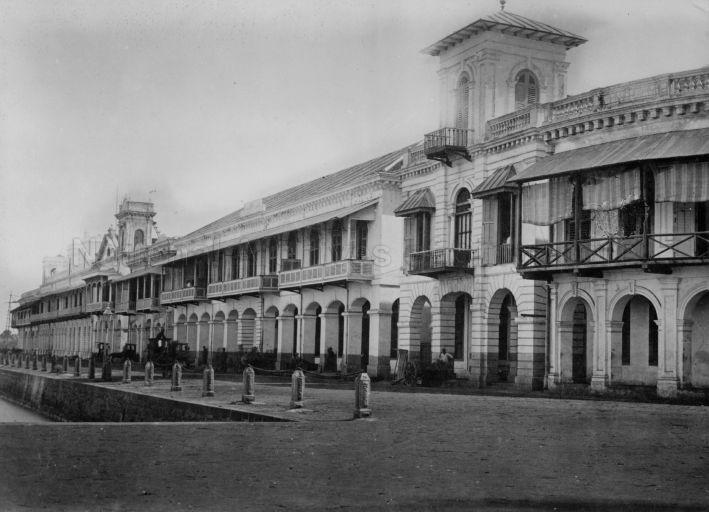 View of Collyer Quay with the old Exchange Building (former building that stood where Fullerton Building now stands) on the extreme right in the late 1800s. Source: NAS[/caption]
View of Collyer Quay with the old Exchange Building (former building that stood where Fullerton Building now stands) on the extreme right in the late 1800s. Source: NAS[/caption]
Collyer Quay's waterfront would have been extremely crowded with boats.
[caption id="" align="aligncenter" width="732"]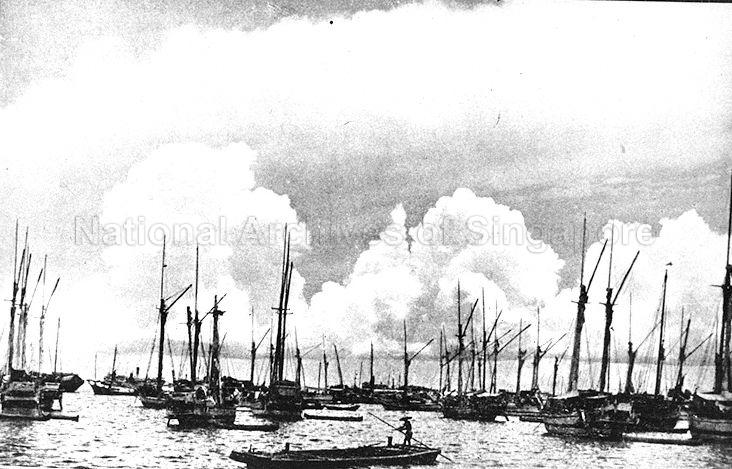 Collyer Quay's waterfront in the late 1800s. Source: NAS[/caption]
Collyer Quay's waterfront in the late 1800s. Source: NAS[/caption]
He would've disembarked at the then 33-year-old Johnston's Pier with with its red lantern beacons.
[caption id="" align="aligncenter" width="610"]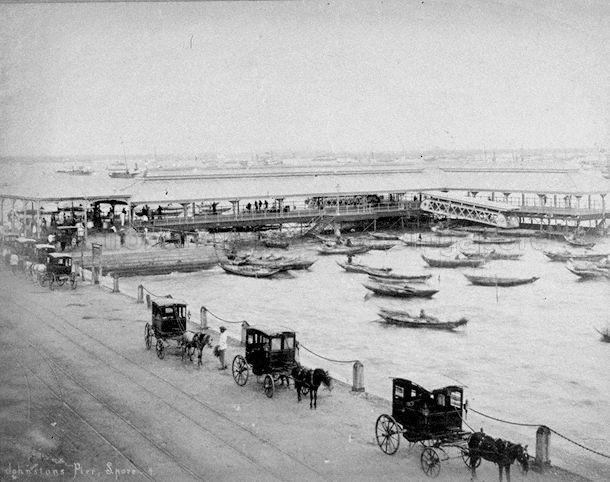 The old Johnston's Pier in the late 1800s. Source: NAS[/caption]
The old Johnston's Pier in the late 1800s. Source: NAS[/caption]
The young Kipling, who had yet to fully establish himself internationally, arrived in Singapore without the same VIP treatment that Charlie Chaplin and Albert Einstein received on their visits to Singapore in later years.
Singapore's hot weather
The first thing that struck Kipling on his arrival in Singapore (or "Singapur" as Kipling called it) was the weather, as he aptly compared the heat on the island to an orchid-house:
"I assure you, Sir, weather as hot as this has not been felt in Singapur for years and years. March is always reckoned our hottest month, but this is quite abnormal."
And I made answer to the stranger wearily: "Yes, of course. They always told that lie in the other places. Leave me alone and let me drip."
This is the heat of an orchid-house, remorseless, steam-sweat that knows no variation between night and day.
Exploring Beach Road and discovering Raffles Hotel
In his wanderings around Singapore, Kipling explored the Beach Road area of 1889, when it still had a beach, and he stumbled upon a 2-year-old Raffles Hotel.
He described a scene that will be entirely unfamiliar to us when we wander along the same area today.
Providence conducted me along a beach, in full view of five miles of shipping, - five solid miles of masts and funnels, - to a place called Raffles Hotel, where the food is as excellent as the rooms are bad. Let the traveller take note. Feed at Raffles and sleep at the Hotel de l'Europe.
Here's a view of the Beach Road area in the late 1800s that Kipling would've seen:
[caption id="" align="aligncenter" width="752"]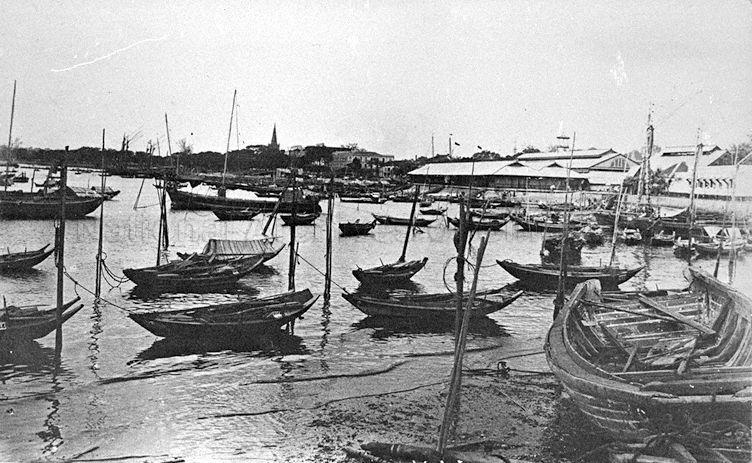 View of the old Clyde Street Market at Beach Road near the junction with Rochor Road in the late 1800s. St Andrew's Cathedral (left background) and Hajjah Fatimah Mosque's (right background) spires can be seen. Source: NAS[/caption]
View of the old Clyde Street Market at Beach Road near the junction with Rochor Road in the late 1800s. St Andrew's Cathedral (left background) and Hajjah Fatimah Mosque's (right background) spires can be seen. Source: NAS[/caption]
Here's what Raffles Hotel looked like in that era, which Kipling would have stayed in for a time to know that its rooms did not measure up to those at the Hotel de l'Europe.
[caption id="" align="aligncenter" width="577"] Source: NAS[/caption]
Source: NAS[/caption]
The old Hotel de l'Europe that Kipling wrote of was located beside the Padang, on the present site of the National Gallery Singapore. The hotel was demolished in the early 1900s, and the old City Hall and Supreme Court Buildings were built in its place.
This was what the hotel, which Kipling stayed in, looked like in the 1880s.
[caption id="" align="aligncenter" width="654"]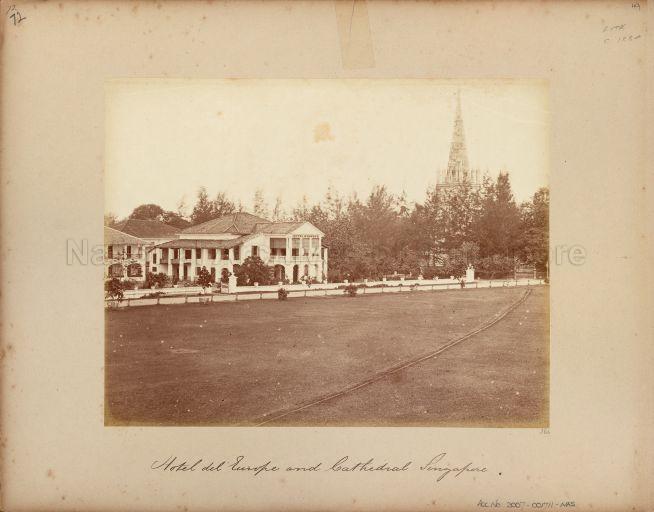 Old Hotel de l'Europe (left) at the Padang in the 1880s, with St Andrew's Cathedral (right). Source: NAS[/caption]
Old Hotel de l'Europe (left) at the Padang in the 1880s, with St Andrew's Cathedral (right). Source: NAS[/caption]
Dining on "turtle steaks" at the Raffles Hotel
While Kipling advised travellers of the era to "Feed at Raffles", he expressed a particular regret on one of the hotel's dishes.
I have eaten curries of the rarest at the Oriental at Penang, the turtle steaks of Raffles's at Singapur still live in my regretful memory, and they gave me chicken liver and suck(l)ing-pig in the Victoria at Hong Kong which I will always extol.
Visiting the Botanic Gardens
Kipling visited the Botanic Gardens, which would have housed a zoo back then, and found it unpleasant, due to the hot weather.
All the Englishmen in the island congregated there. The Botanical Gardens would have been lovely at Kew, but here, where one knew that they were the only place of recreation open to the inhabitants, they were not pleasant.
Nonetheless, he described the plants that were at the gardens, while also complaining about the weather:
All the plants of all the tropics grew there together, and the orchid-house was roofed with thin battens of wood — just enough to keep off the direct rays of the sun. It held waxy-white splendours from Manila, the Philippines, and tropical Africa — plants that were half-slugs, drawing nourishment apparently from their own wooden labels; but there was no difference between the temperature of the orchid-house and the open air; both were heavy, dank, and steaming.
[caption id="" align="aligncenter" width="608"]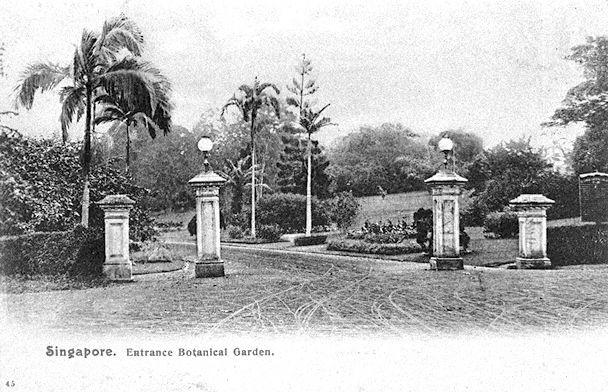 Entrance to the Botanic Gardens. Source: NAS[/caption]
Entrance to the Botanic Gardens. Source: NAS[/caption]
Top image from Getty Images and Wikipedia.
Here are more articles on past visits to Singapore by famous people:
Legend Charlie Chaplin visited S’pore in 1932, came down with dengue fever, warded at SGH
Albert Einstein visited S’pore in 1922, met a 14-year-old boy named David Marshall
If you like what you read, follow us on Facebook and Twitter to get the latest updates.
If you like what you read, follow us on Facebook, Instagram, Twitter and Telegram to get the latest updates.
